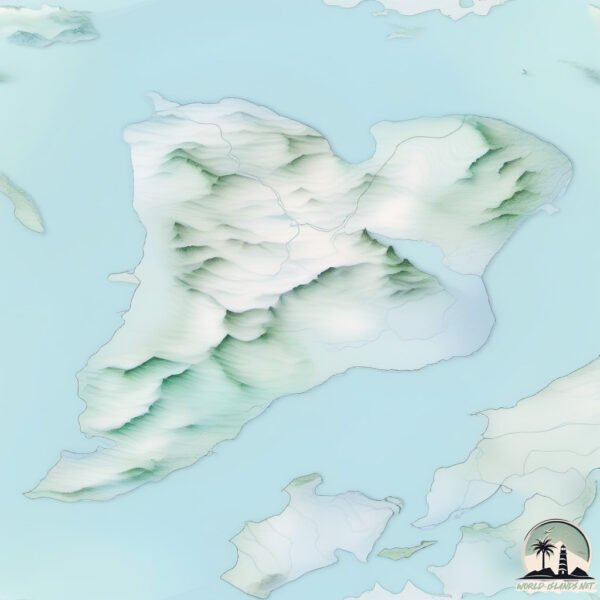Welcome to Sermersooq , a Polar island in the Davis Strait, part of the majestic Arctic Ocean. This guide offers a comprehensive overview of what makes Sermersooq unique – from its geography and climate to its population, infrastructure, and beyond. Dive into the details:
Geography and size of Sermersooq
Size: 201 km²Coastline: 95.5 kmOcean: Arctic OceanSea: Davis StraitContinent: North America
Sermersooq is a Large Island spanning 201 km² with a coastline of 96 km.
Archipel: –
Tectonic Plate: Eurasia – One of the world’s largest tectonic plates, the Eurasian Plate covers a significant portion of Europe and Asia. It’s characterized by diverse geological features, including the Ural Mountains, the European Plain, and the Himalayas formed from its collision with the Indian Plate.
The geographic heart of the island is pinpointed at these coordinates:
Climate and weather of Sermersooq
Climate Zone: PolarClimate Details: TundraTemperature: Cold
Climate Characteristics: The tundra climate features long, extremely cold winters and short, cool summers. Vegetation is limited to mosses, lichens, and small shrubs due to the low temperatures and short growing seasons. Biodiversity is low, but some specialized species thrive.
Topography and nature of Sermersooq
Timezone: UTC-03:00Timezone places: America/Sao_PauloMax. Elevation: 1098 m Mean Elevation: 439 mVegetation: Herbaceous CoverTree Coverage: 11%
The mean elevation is 439 m. The highest elevation on the island reaches approximately 1098 meters above sea level. The island is characterized by Mountains: High, steeply elevated landforms. Characterized by both a high maximum elevation (over 500 meters) and a high mean elevation, creating rugged, mountainous terrains on islands.
Dominating Vegetation: Herbaceous Cover
Vegetation: 6 vegetation zones – Very Highly Diverse Island
Infrastructure and Travelling to Sermersooq
Does the island have a public airport? no .
Does the island have a major port? no .
The mean population of Sermersooq is 0 per km². Sermersooq is Uninhabited. The island belongs to Denmark .
The name of the island resonates across different cultures and languages. Here is how it is known around the world: Arabic: جزيرة غرينلاند; German: Grönland; Spanish: Groenlandia; French: Groenland; Portuguese: Groenlândia; Russian: Гренландия; Chinese: 格陵兰岛
Continuing your journey, Nanortalik is the next notable island, situated merely km away.
Inside Greenland's Enigmatic Sermersooq Island #recommended #nature #didyouknow
island #greenland #wilderness #uninhabited #exploration #arcticwildlife #ecotourism #sport.
Inside Greenland's Enigmatic Sermersooq Island #recommended #nature #didyouknow
island #greenland #wilderness #uninhabited #exploration ...
island #greenland #wilderness #uninhabited #exploration #arcticwildlife #ecotourism #sport.
Greenland Island Kulusuk Sermersooq Western Atlantic Ocean #googlemaps #googleearth #paranormal #100
Island Kulusuk Sermersooq Greenland Western Atlantic Ocean #googlemaps ...
Island Kulusuk Sermersooq Greenland Western Atlantic Ocean #googlemaps #googleearth #paranormal #ghost #tour ...
Western Atlantic Ocean Greenland Island Kulusuk Sermersooq #googlemaps #googleearth #paranormal #100
Island Kulusuk Sermersooq Greenland Western Atlantic Ocean #googlemaps ...
Island Kulusuk Sermersooq Greenland Western Atlantic Ocean #googlemaps #googleearth #paranormal #ghost #tour ...
Denmark is classified as Developed region: nonG7: Developed economies outside of the Group of Seven, characterized by high income and advanced economic structures. The level of income is High income: OECD.
News – Latest Updates and Headlines from Sermersooq
Stay informed with the most recent news and important headlines from Sermersooq. Here’s a roundup of the latest developments.
Loading...
Please note: The data used here has been primarily extracted from satellite readings. Deviations from exact values may occur, particularly regarding the height of elevations and population density. Land area and coastline measurements refer to average values at mean high tide.

